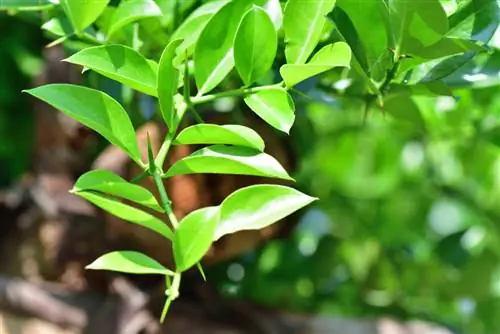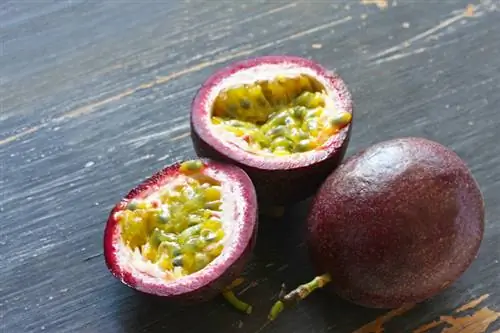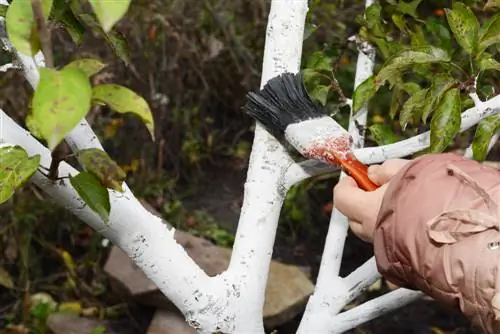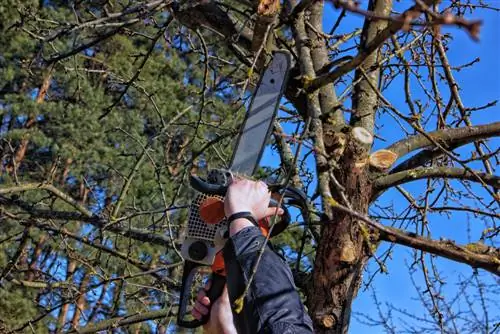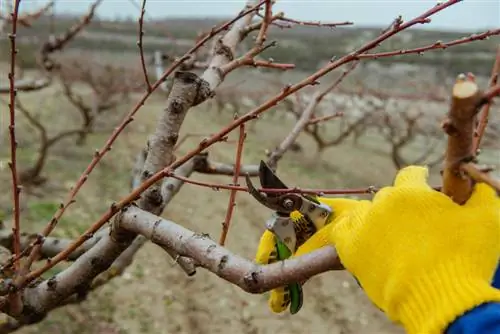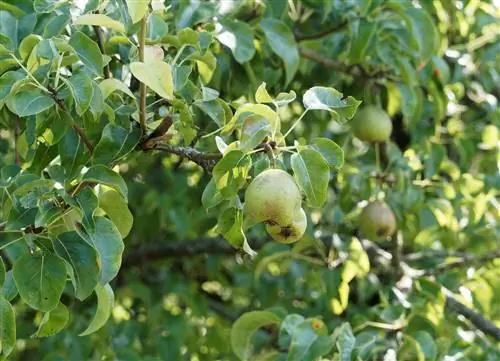- Author admin [email protected].
- Public 2023-12-16 16:46.
- Last modified 2025-01-23 11:21.
Many a gardener has discovered a plum or apple tree suddenly growing in his garden that he did not plant himself. In fact, many fruit trees tend to self-propagate either through self-sowing or through root shoots. Especially the plum-like varieties such as plums, plums, mirabelle plums and reindeer plums tend to develop thorns or spines.
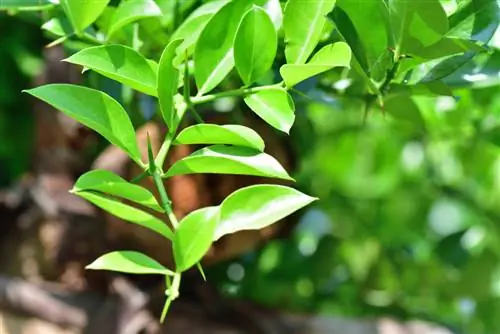
Why does my fruit tree have thorns?
Fruit trees with thorns are usually wild forms of plums, plums, mirabelle plums or cherry plums that arise from wild sloe plums or root shoots. The fruits can mostly be eaten, although taste and use vary.
Thorny fruit tree is usually wildling
Plums and many plum-like fruits such as plums, mirabelle plums or reneclodes come from the so-called sloe plum, which can still sometimes be found in nature today. There are also other wild plum species that are often used as rootstocks for grafting into cultivated varieties. Now it can happen that these rootstocks sprout root shoots that suddenly look completely different from the grafted noble variety - and often have thorns. Cutting down the fruit tree or cutting it back can also cause the wild rootstock to sprout suddenly. This means: If plums, mirabelle plums or cherry plums with thorns suddenly grow in your garden, then they are wild forms.
Can you eat the wild fruit?
You can eat wild mirabelle plums and the like without worry, although of course you have to be careful when harvesting them because of the thorns. However, it is not certain whether these varieties actually taste good. Some wild fruits are sweet, juicy and are in no way inferior to the noble varieties - except that they are usually significantly smaller. Others have a sour, floury taste, but are often suitable for preserving. Wild plums (often with a lot of sugar!) can be used to make delicious jam, a delicious jelly or a fine liqueur. Other wild plums, on the other hand, are neither suitable for eating fresh nor for preserving. You can only find out what exactly applies to your Wildling by trying it out.
What can you do with the thorny plant?
If you have found a thorny plant in your garden, you are left with these options:
- They clear the crop and plant a noble variety instead.
- They let the wild variety grow and see whether its fruits are edible.
You can also remove the thorny shoots as young shoots and thus prevent the rootstock from sprouting. On the other hand, if you let the wild tree grow, it will produce fewer and fewer thorns over the years.
Tip
Spines and thorns are not synonyms, but have evolved botanically completely differently. However, both have developed because the plant defends itself against predators.

